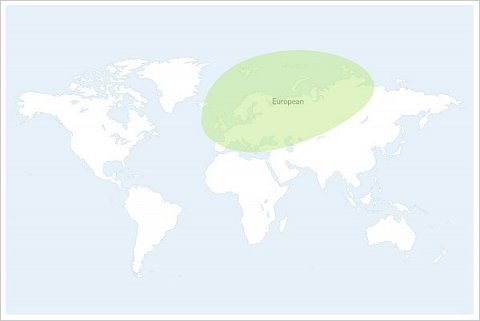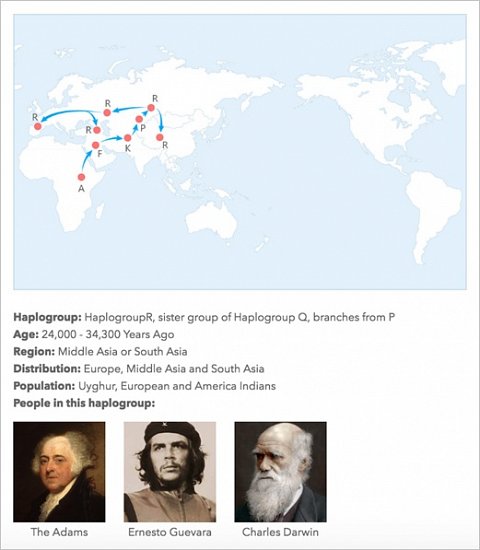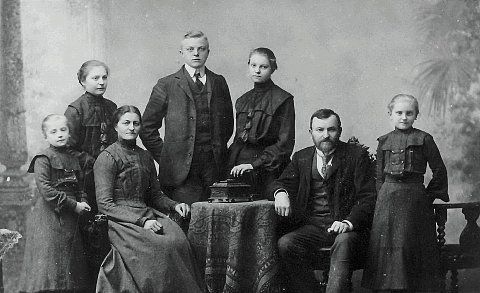-
Ancestry Report
review on 5 January 2017
by Ellen Hinkley

At a Glance
Summary
If you’re of Southeast Asian descent and you’ve taken a 23andMe or AncestryDNA test, WeGene’s free ancestry service could well be a great way of delving deeper into your data. If you’re of European descent, you may still make discoveries but you’d be forgiven for finding WeGene a bit disappointing – their population reference groups are mainly Chinese and Japanese which will limit your results as a European, and this is exactly what I found!
I was impressed with WeGene’s ability to report on my paternal and maternal haplogroups, especially as AncestryDNA don’t provide this data. I also liked that they revealed the ‘notable people’ who are in my haplogroups – a nice touch!
All in all, WeGene offers an engaging ancestry service at no cost which may well complement the test results you’ve already received. Comparing the ethnic breakdown produced by WeGene with those produced by 23andMe or AncestryDNA could help you identify key patterns, and the haplogroup information may well open up new lines of enquire into your lineage. Unfortunately, the peculiar results I received left me uncertain has to how reliable the results were, so I recommend you proceed with caution if you want to use this service.
Full Review
WeGene is a genetic ancestry service based in Shenzhen in China, specialising in Southeast Asian ancestry. They allow you to upload the digitised genetic data you get from taking 23andMe or AncestryDNA tests and they’ll re-analyse it for free. As they don’t yet have the ability to analyse their customers’ biological samples directly, they don’t yet offer a full testing service.
I’m constantly comparing the reports I’ve received from various ancestry companies (it’s the patterns that most often lead to the breakthroughs), so I couldn’t pass up the opportunity to re-analyse my data!
Product Expectations
WeGene don’t describe the ancestry service they provide on their site, however, I had a rough idea of what to expect from what I’d read on various forums, and I knew the results would be broken into two sections: Ethnicity and Haplogroups.
I knew that WeGene focused on Southeast Asian reference data, and as I’m of European descent, I presumed this meant that the ethnic profile they’d produce for me would be simpler and less robust. I’d also read that they’d report on my maternal and paternal haplogroups, which is nothing new if you’ve tested with Family Tree DNA or 23andMe, but if you’ve only tested with AncestryDNA (and received results that aren’t specific to your maternal or paternal lineage), it was amazing to discover that WeGene could fill in the blanks!
Online Registration
Online registration was really straightforward. Once you make sure you’re on the English-language site, you just choose the company you’ve tested with, provide some basic info about yourself, and upload the file you’ve downloaded from your 23andMe or AncestryDNA account.
One of the things I liked about WeGene was that you can upload multiple sets of digitised genetic data, and even data from other family members. This makes it much easier to compare results derived from different data sets.
WeGene say it can take up to three business days to view your results after uploading your data, but I only had to wait 20 minutes after uploading my AncestryDNA file.
The Results
As discussed, the results were broken into two sections: Ethnicity and Haplogroups.
Results Section: Ethnicity
The ethnicity section contained a map of the world and the location of the population groups with whom I share my DNA (shown below):

My ethnicity map.
As you can see, I learned very little from the map. Fortunately my ethnic breakdown (shown below) was much clearer!

My ethnic breakdown.
Although this ethnic breakdown isn’t totally beyond the realms of possibility, given I was born in England and that my immediate family are English; the English and French results can’t possibly be right (perhaps they’d been mixed up?). It was also interesting to note that when I uploaded my Dad’s AncestryDNA data (produced by his AncestryDNA test), he turned out to have an even greater proportion of DNA associated to French populations: 77.37% compared to my 58.12%. Sadly, this peculiarity meant that I had to take the rest of WeGene’s results with a pinch of salt.
Results Section: Haplogroups
This was the section I was most excited about before uploading my data to WeGene. As an AncestryDNA user, my maternal and paternal haplogroups have never been reported, so I couldn’t wait to see what WeGene would reveal. Unfortunately, the strange ethnic profile I’d received meant that my excitement was tempered somewhat!
The section contained both my maternal and paternal haplogroups, showed the migratory paths of my maternal and paternal ancestors, gave me top-line information about each group, and even revealed the ‘notable people’ in my group!
My paternal haplogroup was reported as ‘R1b1a1a2a1a1c2a1’ which I was impressed to discover was easy to research online, and I quickly found my position on several Y DNA phylogenetic trees. My paternal migratory path with top-line info is shown below:

My paternal migratory path with top-line info.
I have to say that I found the map a bit confusing. It seemed to be saying that my paternal ancestors migrated to both Spain and China 24,000 to 34,300 years ago. Although I wouldn’t expect this to ‘sync up’ with my recent family history, modern Spanish and Chinese populations seem a little too distinct to share paternal lineage to such a degree.
On the plus side, I enjoyed seeing the ‘notable people’ with whom I share my paternal haplogroup (note that none of them are of Chinese ethnicity!). Then again, I would have liked to have had a bit more information about my haplogroups and how they were calculated.
Summary
If you’re of Southeast Asian descent and you’ve taken a 23andMe or AncestryDNA test, WeGene’s free ancestry service could well be a great way of delving deeper into your data. If you’re of European descent, you may still make discoveries but you’d be forgiven for finding WeGene a bit disappointing – their population reference groups are mainly Chinese and Japanese which will limit your results as a European, and this is exactly what I found!
I was impressed with WeGene’s ability to report on my paternal and maternal haplogroups, especially as AncestryDNA don’t provide this data. I also liked that they revealed the ‘notable people’ who are in my haplogroups – a nice touch!
All in all, WeGene offers an engaging ancestry service at no cost which may well complement the test results you’ve already received. Comparing the ethnic breakdown produced by WeGene with those produced by 23andMe or AncestryDNA could help you identify key patterns, and the haplogroup information may well open up new lines of enquire into your lineage. Unfortunately, the peculiar results I received left me uncertain has to how reliable the results were, so I recommend you proceed with caution if you want to use this service.


